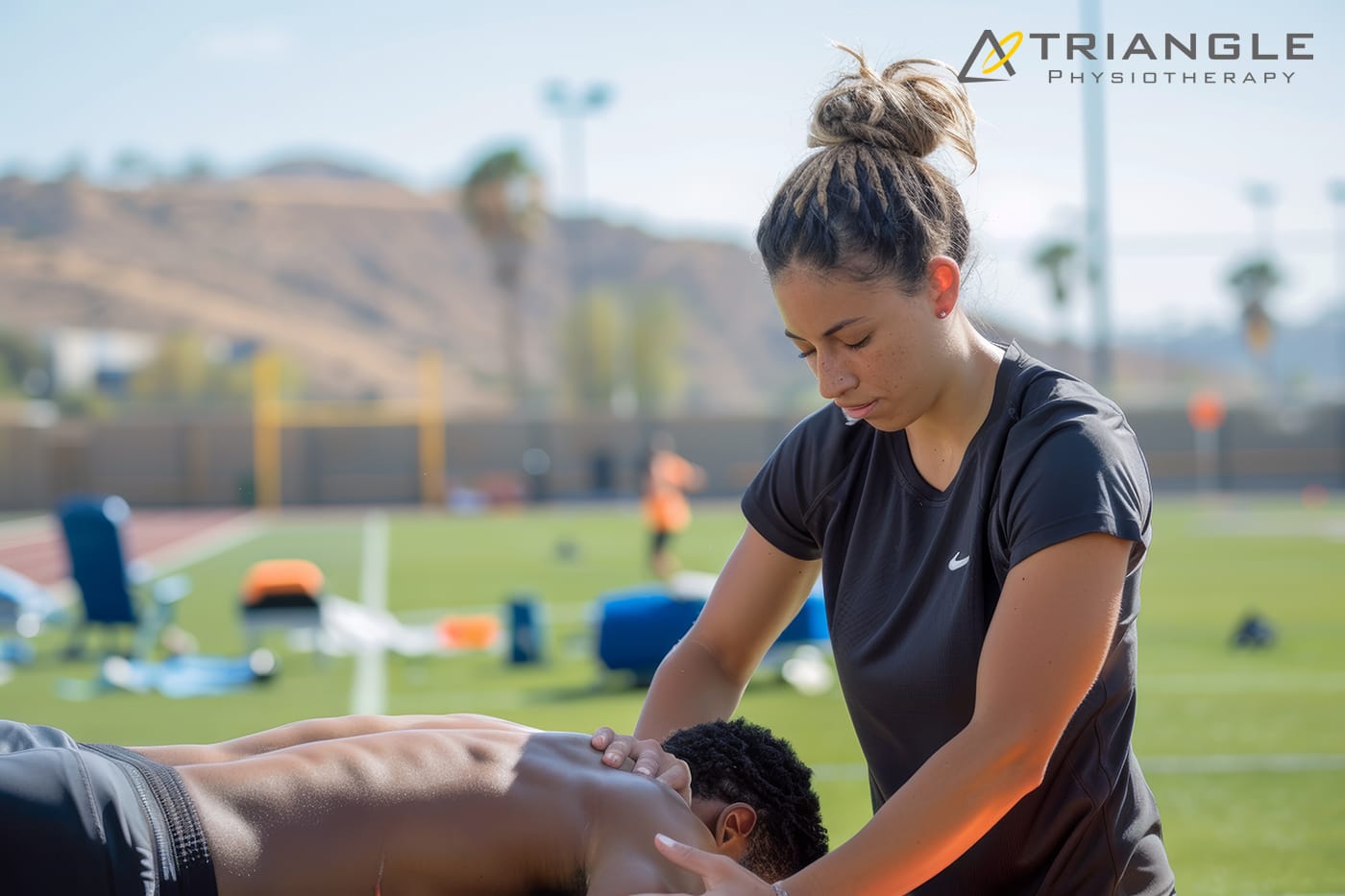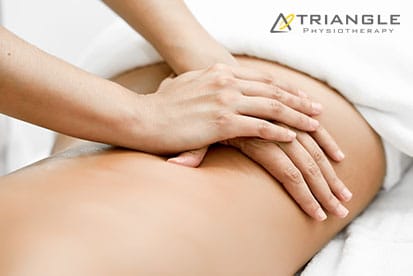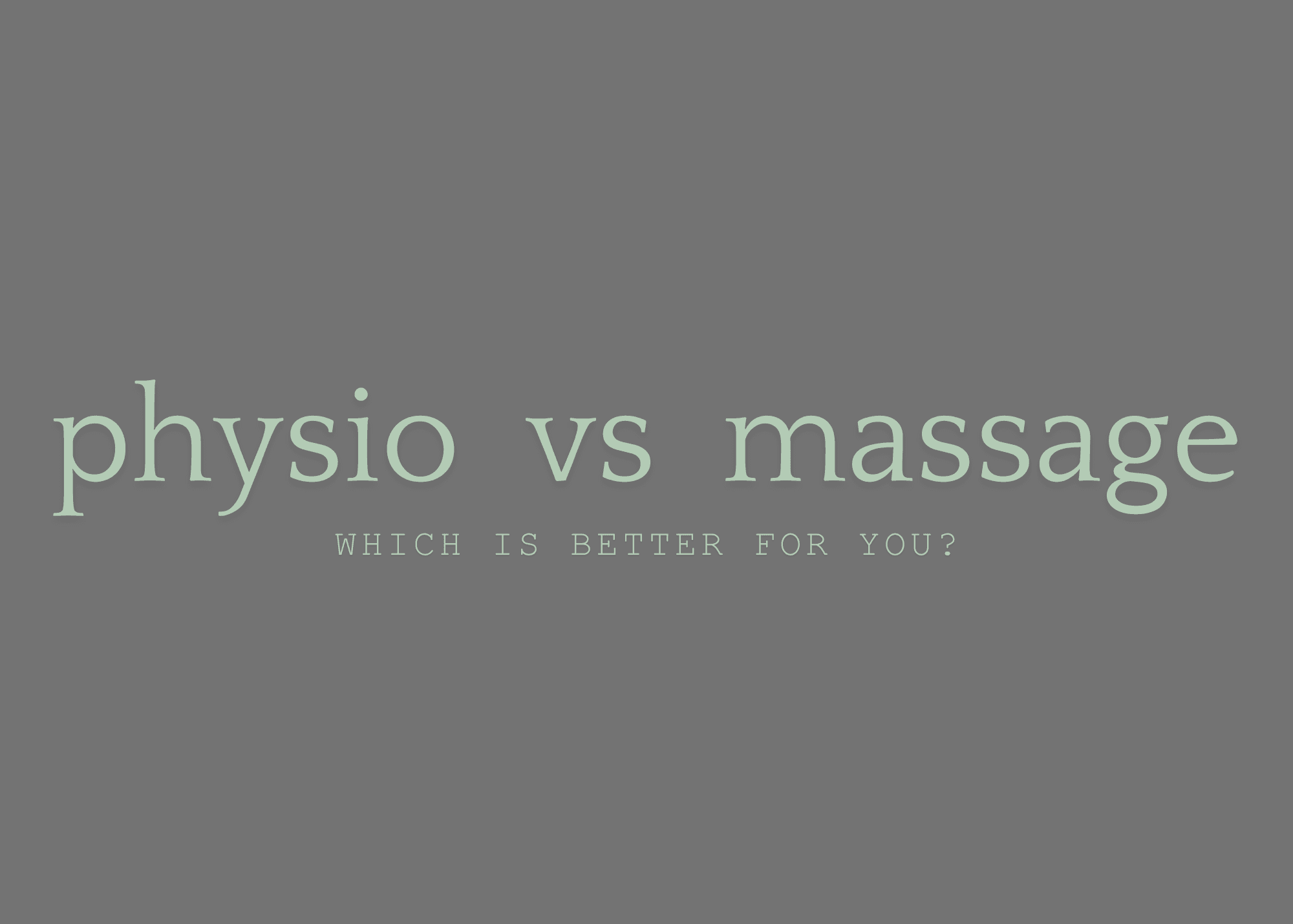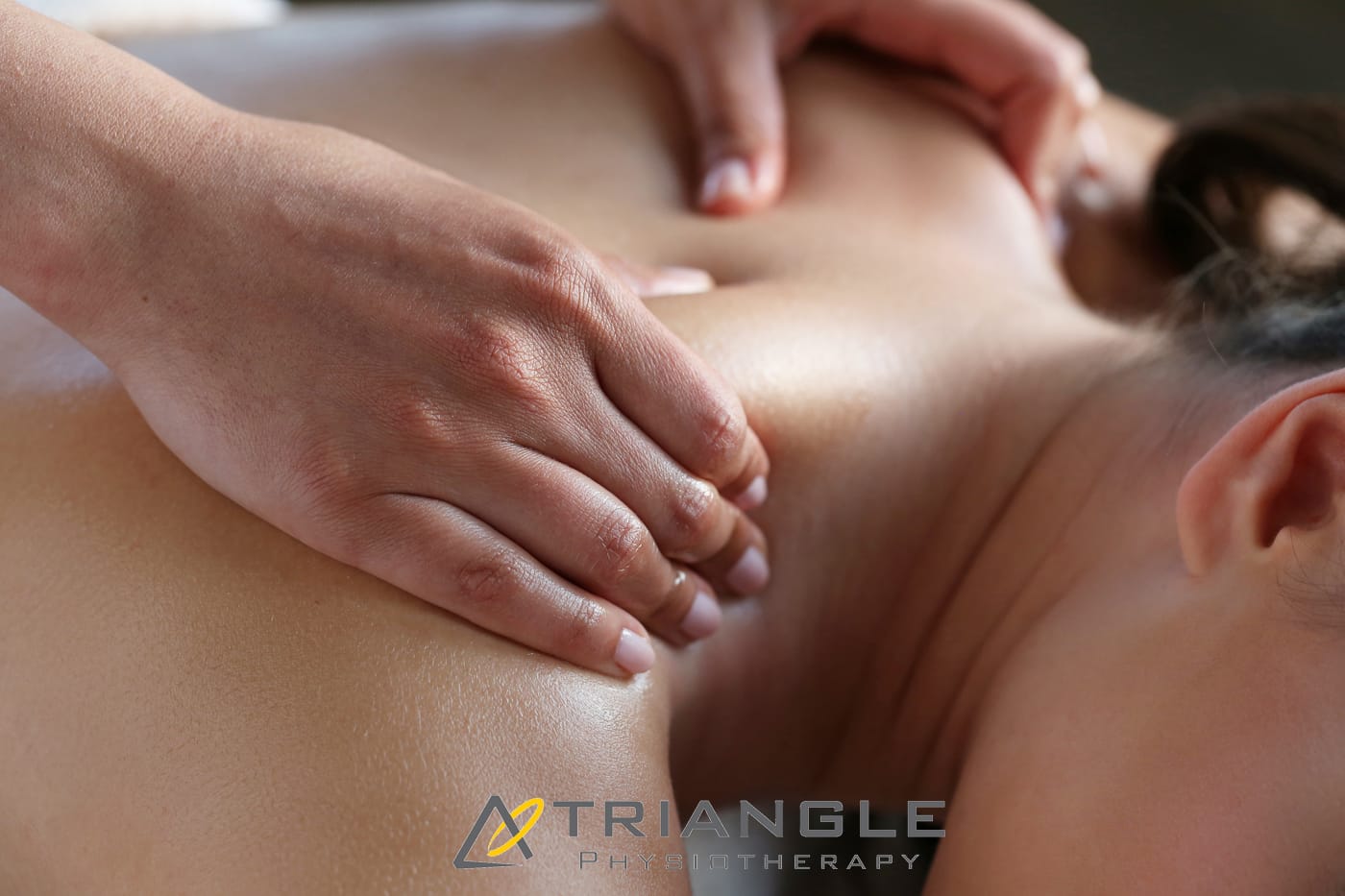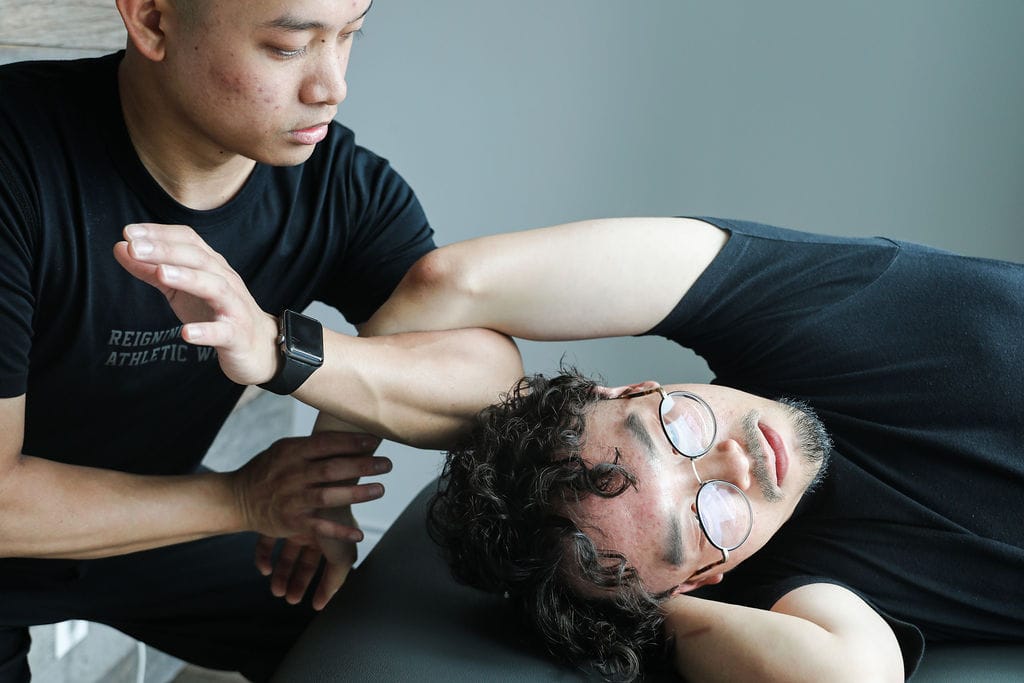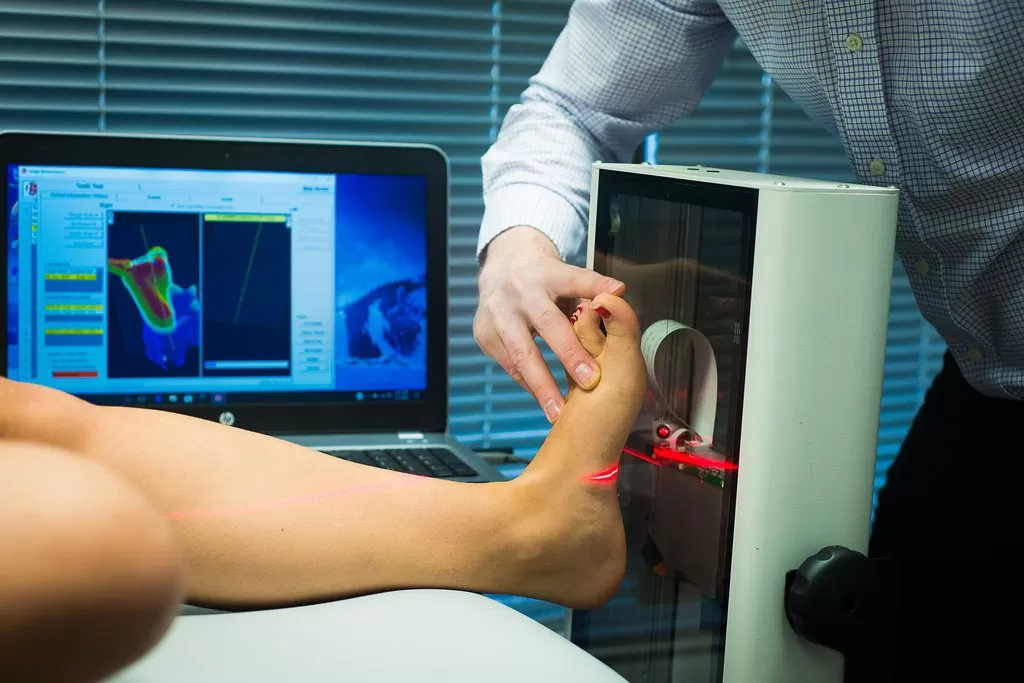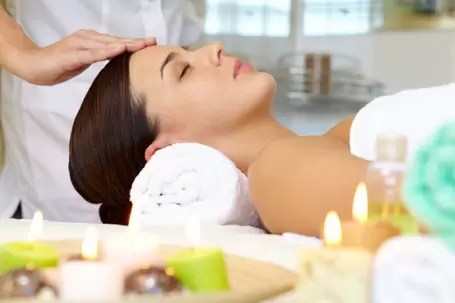When it comes to therapeutic massage, two popular techniques often come up: sports massage and deep tissue massage. While they share some similarities, they serve different purposes and are designed for distinct needs. Understanding the nuances between the two can help you choose the right massage for your goals, whether you’re an athlete or simply seeking relief from tension. The massage therapists at Triangle Physiotherapy use techniques that can target the muscles to help reduce your pain and improve your ability to play the sports you love as well as enhance your well-being.
Understanding the Techniques
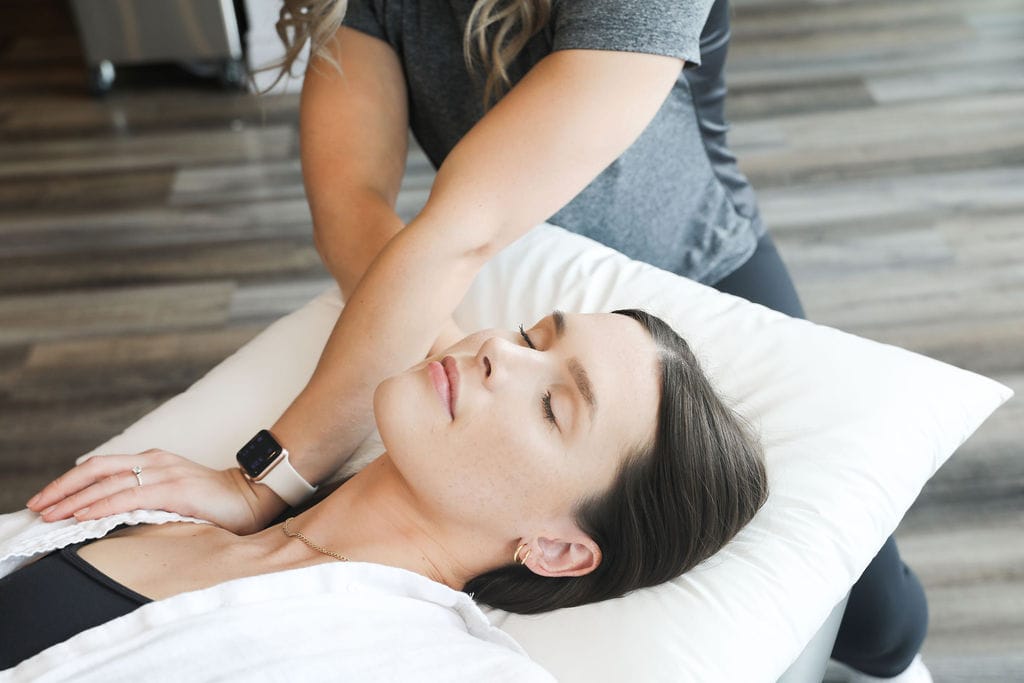
Sports Massage
Sports massage is specifically tailored for athletes, focusing on enhancing performance, preventing injuries, and aiding recovery. It incorporates various techniques to address the specific needs of athletes at different stages of training and competition. Whether you’re preparing for a big race or recovering from a strenuous workout, sports massage can be a valuable addition to your routine.
Deep Tissue Massage
Deep tissue massage, on the other hand, is a broader technique that targets the deeper layers of muscle and connective tissue throughout the body. It aims to alleviate chronic pain, tension, and stiffness by applying sustained pressure on targeted areas. While deep tissue massage can benefit anyone, it’s particularly effective for those who experience long-term muscle tension or discomfort.
Key Differences
Purpose and Focus
The primary difference between sports and deep tissue massage lies in their purpose. Sports massage is focused on improving athletic performance and recovery, using techniques tailored to the athlete’s specific needs. It may involve stretching, trigger point therapy, and even techniques to stimulate blood flow.
Conversely, deep tissue massage targets specific areas of chronic pain and tension. It works through layers of muscle and fascia to release knots and relieve tightness, making it ideal for individuals dealing with ongoing discomfort rather than performance enhancement.
Techniques Used
Both massages utilize pressure and manipulation, but the techniques may vary significantly. Sports massage often employs:
- Compression techniques: To stimulate circulation and reduce muscle soreness.
- Stretching: To improve flexibility and range of motion.
- Cross-fiber friction: To break down scar tissue and promote healing.
Deep tissue massage, in contrast, focuses on:
- Slow, deep strokes: To reach the deeper layers of muscle.
- Pressure points: To release tension in specific areas, often requiring more intensity.
- Kneading: To work out knots and alleviate chronic tightness.
Ideal Recipients
Sports massage is primarily designed for athletes or active individuals who engage in regular physical activity. It’s beneficial before events to prepare muscles or after workouts to speed recovery. Athletes of all levels, from recreational runners to professional players, can gain from this specialized approach.
Deep tissue massage, however, is suitable for anyone experiencing chronic pain or tension, regardless of their activity level. It’s often recommended for individuals who sit for long periods, have physically demanding jobs, or suffer from conditions like arthritis or fibromyalgia.
FAQs
Can I get a sports massage if I’m not an athlete?
Absolutely! Sports massage can benefit anyone with muscle tension or who engages in physical activities, regardless of their athletic level.
Is deep tissue massage painful?
Deep tissue massage can be intense, especially if you have significant muscle tension. However, communication with your therapist can help manage discomfort.
How often should I get a massage?
The frequency of massage depends on individual needs and goals. Athletes might benefit from more frequent sessions, while those seeking relief from chronic pain may require regular visits to maintain comfort.
Can I use both types of massage?
Yes! Many people find that incorporating both sports and deep tissue massage into their routine addresses different needs effectively.
Choosing between sports massage and deep tissue massage ultimately depends on your individual needs and goals. While sports massage focuses on performance and recovery for athletes, deep tissue massage aims to alleviate chronic tension and discomfort for a broader audience. Understanding these differences can help you select the most beneficial approach for your well-being, ensuring you receive the right care for your body. Whether you’re looking to enhance your athletic performance or simply unwind from daily stresses, both techniques offer unique advantages that can enhance your overall health.
Looking for a Massage Therapist? Call or book your appointment online.
Triangle Physiotherapy has 8 locations in the Greater Toronto Area with registered massage therapists that can help you perform at your best! Book your Appointment today!
References:
https://www.physio-pedia.com/Rehabilitation_in_Sport
https://www.physio-pedia.com/Massage
Massage Therapy has Many Stress-Relieving Benefits.
In today’s fast-paced world, stress has become a common issue for many people. Whether it’s work-related pressure, personal challenges, or the general hustle and bustle of daily life, stress can have a significant impact on both physical and mental health. One effective way to combat stress is through massage therapy.
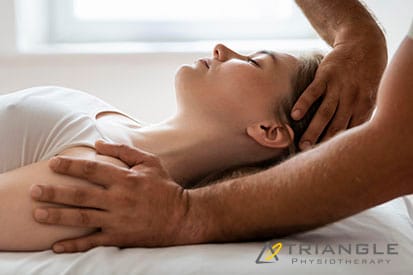
Here are three ways massage therapy can help reduce stress:
1. Physical Relaxation
One of the most immediate benefits of massage therapy is physical relaxation. Massage helps to relax tense muscles, reduce pain, and improve circulation. This physical relaxation can alleviate stress-related muscle tension, which is a common physical manifestation of stress. When the body is relaxed, it sends signals to the brain that help to reduce overall stress levels.
Massage techniques such as Swedish massage, deep tissue massage, and hot stone massage are particularly effective at promoting muscle relaxation. These techniques involve kneading, pressing, and rubbing the muscles to release tension and knots. As the muscles relax, blood flow improves, which helps to deliver oxygen and nutrients to tissues while removing toxins. This not only alleviates physical discomfort but also promotes a sense of well-being and relaxation.
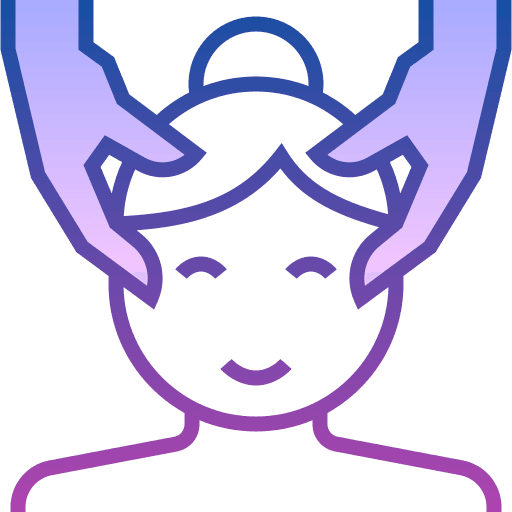
2. Reduction of Stress Hormones
Massage therapy can also help regulate the body’s stress response by affecting hormone levels. Studies have shown that massage therapy can lower the levels of cortisol, a hormone that the body releases in response to stress. High levels of cortisol are associated with various negative health effects, including anxiety, depression, and sleep disturbances.
In addition to lowering cortisol levels, massage therapy can increase the production of serotonin and dopamine. These neurotransmitters play key roles in mood regulation and overall feelings of happiness and well-being. Increased levels of serotonin and dopamine can help combat the effects of stress, leading to a more positive outlook and improved mental health.
3. Improved Sleep Quality
Stress often interferes with sleep, leading to a cycle of sleep deprivation and increased stress. Massage therapy can help break this cycle by promoting relaxation and reducing insomnia. Regular massage sessions have been shown to improve sleep quality by enhancing the body’s production of serotonin and melatonin, hormones that regulate sleep.
Better sleep allows the body and mind to recover from the daily stresses and challenges, leading to improved overall mental health and resilience against stressors. With regular massage therapy, individuals can experience more restful and restorative sleep, which in turn helps to reduce stress and improve their overall quality of life.
Click here to book an appointment with a massage therapist at one of our eight locations.
- Massage Therapy Etobicoke – Triangle Physiotherapy Etobicoke
- Oakville Massage Therapy Clinic – Triangle Physiotherapy Oakville
- Massage Therapy North York – Triangle Physiotherapy North York
- Mississauga Massage Therapy Clinics – Triangle Physiotherapy Mississauga
- Downtown Massage Therapy Clinics – Triangle Physiotherapy King West
- Uptown Massage Therapy Clinics – Triangle Physiotherapy Lawrence Park
- Massage Therapy Clinic Downtown Toronto – Triangle Physiotherapy Queens Quay
- Massage Therapy Clinics Mississauga – Triangle Physiotherapy Erin Mills
Massage therapy is an excellent way to reduce stress and improve overall well-being. If you’re seeking complementary treatments like massage therapy or physiotherapy in Etobicoke, Oakville, North York, Toronto, Lawrence Park, Queens Quay, Erin Mills, Mississauga, or Liberty Village, experienced physiotherapists are available to help you achieve better health and relaxation.
The choice between physiotherapy and massage therapy depends on your specific needs, goals, and health conditions. Here’s a detailed comparison to help you decide which might be better for you:
Physiotherapy
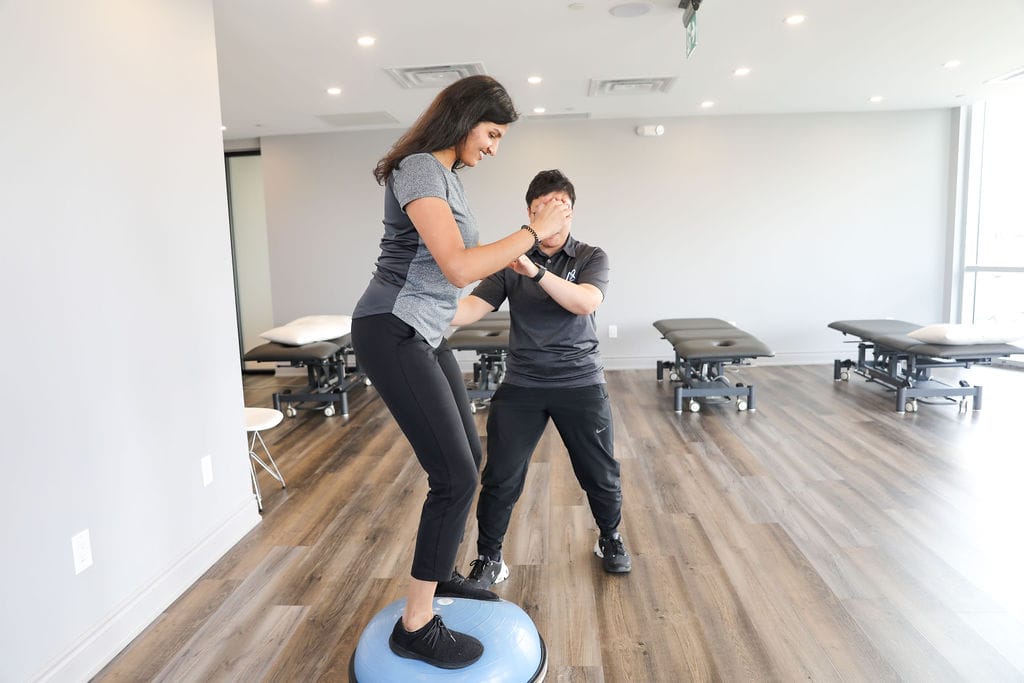
What it is:
- A healthcare profession focused on diagnosing, managing, and preventing movement disorders.
- Uses exercises, manual therapy, education, and modalities like ultrasound and electrical stimulation.
Benefits:
- Rehabilitation: Effective for recovering from injuries, surgeries, and chronic conditions like arthritis.
- Pain Management: Addresses the root cause of pain through various techniques and exercises.
- Improved Mobility: Helps restore function and movement, particularly after injury or surgery.
- Preventive Care: Offers strategies to prevent future injuries or manage chronic conditions.
- Customized Treatment: Tailors plans based on individual assessments and needs.
Common Conditions Treated:
- Musculoskeletal injuries (e.g., sprains, fractures)
- Neurological conditions (e.g., stroke, multiple sclerosis)
- Cardiopulmonary issues (e.g., chronic obstructive pulmonary disease)
- Post-surgical rehabilitation
Massage Therapy
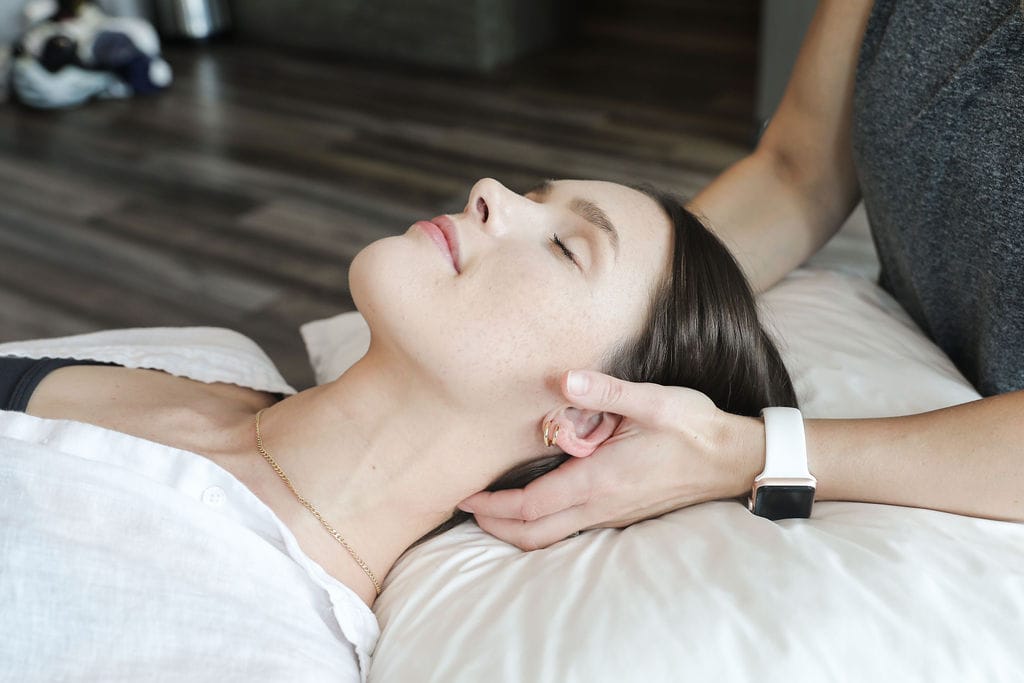
What it is:
- A practice involving the manipulation of soft tissues (muscles, tendons, ligaments) to enhance well-being.
- Uses techniques like stroking, kneading, and applying pressure.
Benefits:
- Relaxation: Promotes overall relaxation and stress relief.
- Pain Relief: Alleviates muscle tension and pain.
- Improved Circulation: Enhances blood flow, which can aid in healing.
- Flexibility: Increases range of motion and reduces stiffness.
- Mental Health: Can improve mood and reduce symptoms of anxiety and depression.
Common Conditions Treated:
- Muscle tension and soreness
- Stress-related conditions
- Chronic pain (e.g., back pain, fibromyalgia)
- Sports injuries
- Headaches and migraines
Which is Better for You?
- For Injury Rehabilitation or Chronic Conditions:
- Physiotherapy is typically more suitable as it provides a structured approach to recovery, addressing the underlying causes of your condition.
- For Stress Relief and Muscle Tension:
- Massage Therapy can be highly effective if your primary goal is relaxation and relief from muscle tightness.
- For Pain Management:
- Both can be effective, but the choice depends on the cause of the pain. Physiotherapy is often better for pain related to injury or chronic conditions, while massage therapy can be great for muscle-related pain.
- For Improved Mobility and Function:
- Physiotherapy focuses on restoring function and movement, making it the better choice for mobility issues.
- For Preventive Care:
- Physiotherapy provides long-term strategies to prevent injuries and manage chronic conditions.
- For Overall Well-being and Relaxation:
- Massage Therapy is beneficial for enhancing general well-being, reducing stress, and promoting relaxation.
Combination of Both:
- In some cases, a combination of physiotherapy and massage therapy can be beneficial. For example, physiotherapy can address the underlying issues, while massage therapy can help manage symptoms and improve overall well-being.
Conclusion:
Consult with a healthcare professional to get a personalized recommendation based on your specific health needs and goals. They can help you decide the best course of action and whether one or a combination of both therapies is ideal for you.
Click here to book an appointment with a physiotherapist and massage therapist at one of our eight locations.
- Physiotherapy Etobicoke – Triangle Physiotherapy Etobicoke
- Oakville Physiotherapy Clinic – Triangle Physiotherapy Oakville
- Physiotherapy North York – Triangle Physiotherapy North York
- Mississauga Physiotherapy Clinics – Triangle Physiotherapy Mississauga
- Downtown Physiotherapy Clinics – Triangle Physiotherapy King West
- Uptown Physiotherapy Clinics – Triangle Physiotherapy Lawrence Park
- Physiotherapy Clinic Downtown Toronto – Triangle Physiotherapy Queens Quay
- Physiotherapy Clinics Mississauga – Triangle Physiotherapy Erin Mills
Choosing between physiotherapy and massage therapy depends on your specific needs and health goals. Both can be beneficial for pain relief and overall wellness. For those looking for physiotherapy in Etobicoke, Oakville, North York, Toronto, Lawrence Park, Queens Quay, Erin Mills, Mississauga, or Liberty Village, there are skilled practitioners available to help you decide the best approach for your situation.
Massage therapy involves the manipulation of the body’s soft tissues, including muscles, connective tissues, tendons, ligaments, and skin, to improve a person’s health and well-being. This practice has been used for thousands of years across various cultures and is widely recognized for its numerous benefits.
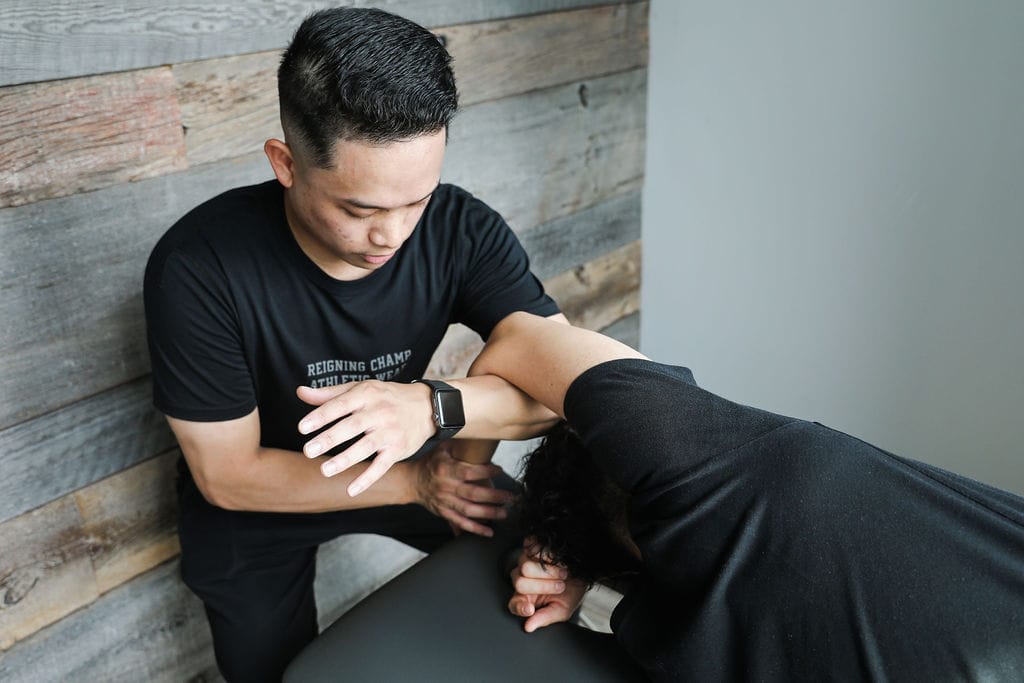
What is Deep Tissue Massage?
Deep tissue massage is a type of massage therapy that focuses on the deeper layers of muscle and connective tissue. It is especially beneficial for individuals who suffer from chronic pain, muscle tension, or are recovering from an injury. This technique involves the use of slow, deliberate strokes and deep pressure to target specific areas of tension and tightness.
What is Swedish Massage?
Swedish massage is a popular and widely practiced form of massage therapy known for its gentle and relaxing techniques. It focuses on promoting overall relaxation, improving blood flow, and relieving muscle tension. Swedish massage is an excellent choice for those new to massage therapy or looking for a general wellness treatment.
What is the difference between Deep Tissue Massage and Swedish Massage?
Swedish Massage:
- Relaxation: Promotes overall relaxation and reduces stress.
- Circulation: Enhances blood flow and oxygen delivery.
- Muscle Relief: Eases muscle tension and soreness.
- Flexibility: Improves range of motion and flexibility.
- General Wellness: Suitable for maintaining overall health and well-being.
Deep Tissue Massage:
- Pain Relief: Addresses chronic pain and conditions such as lower back pain and neck pain.
- Muscle Tension: Releases deeper layers of muscle tension and knots.
- Injury Recovery: Aids in rehabilitation from injuries by promoting healing and reducing scar tissue.
- Posture Improvement: Corrects muscle imbalances and postural issues.
- Specific Problem Areas: Focuses on targeted areas rather than the whole body.
What are some other types of Massage therapy?
1. Sports Massage
- Focus: Enhances athletic performance and recovery.
- Techniques: Combines Swedish massage, deep tissue, and stretching techniques.
- Benefits: Reduces muscle soreness, improves flexibility, and prevents injuries.
- Ideal For: Athletes and active individuals.
2. Trigger Point Therapy
- Focus: Relieves pain by targeting specific trigger points.
- Techniques: Applies direct pressure to trigger points (knots in the muscles).
- Benefits: Reduces localized pain and referred pain in other areas.
- Ideal For: People with chronic pain and tension.
3. Shiatsu
- Focus: Balances the body’s energy flow.
- Techniques: Uses finger pressure on specific points along the body’s meridians.
- Benefits: Promotes relaxation, reduces stress, and improves energy flow.
- Ideal For: Individuals seeking holistic health benefits and stress relief.
4. Reflexology
- Focus: Stimulates reflex points on the feet, hands, or ears.
- Techniques: Applies pressure to specific points believed to correspond to other body parts.
- Benefits: Enhances overall health and well-being, relieves stress, and improves circulation.
- Ideal For: People looking for non-invasive therapy and overall wellness.
5. Prenatal Massage
- Focus: Supports the health and well-being of pregnant women.
- Techniques: Gentle techniques to relieve pregnancy-related discomfort.
- Benefits: Reduces back pain, improves sleep, and decreases stress and anxiety.
- Ideal For: Pregnant women experiencing discomfort and seeking relaxation.
6. Hot Stone Massage
- Focus: Deep relaxation and muscle tension relief.
- Techniques: Uses heated stones placed on the body and integrated into massage strokes.
- Benefits: Enhances relaxation, improves circulation, and alleviates muscle stiffness.
- Ideal For: Individuals looking for a deeply relaxing experience.
7. Thai Massage
- Focus: Combines acupressure, stretching, and assisted yoga postures.
- Techniques: Performed on a mat, involves rhythmic pressure and stretching.
- Benefits: Increases flexibility, relieves muscle tension, and boosts energy levels.
- Ideal For: People seeking an active and invigorating massage experience.
8. Lymphatic Drainage Massage
- Focus: Stimulates the lymphatic system to remove toxins and waste.
- Techniques: Gentle, rhythmic strokes and light pressure.
- Benefits: Reduces swelling, improves immune function, and detoxifies the body.
- Ideal For: Individuals with lymphedema, post-surgery recovery, or those wanting detoxification.
9. Craniosacral Therapy
- Focus: Works on the craniosacral system to relieve tension.
- Techniques: Gentle touch to manipulate the skull and sacrum.
- Benefits: Reduces stress, alleviates pain, and improves nervous system function.
- Ideal For: People with chronic pain, headaches, or stress-related conditions.
10. Aromatherapy Massage
- Focus: Enhances the massage experience using essential oils.
- Techniques: Combines Swedish or other massage techniques with aromatherapy.
- Benefits: Promotes relaxation, reduces stress, and improves mood.
- Ideal For: Individuals seeking relaxation and mood enhancement.
Click here to book an appointment with a massage therapist at one of our eight locations.
- Massage therapy Etobicoke – Triangle Physiotherapy Etobicoke
- Oakville Massage Therapy Clinic – Triangle Physiotherapy Oakville
- Massage Therapy North York – Triangle Physiotherapy North York
- Mississauga Massage Therapy Clinics – Triangle Physiotherapy Mississauga
- Downtown Massage Therapy Clinics – Triangle Physiotherapy King West
- Uptown Massage Therapy Clinics – Triangle Physiotherapy Lawrence Park
- Massage Therapy Clinic Downtown Toronto – Triangle Physiotherapy Queens Quay
- RMT Mississauga – Triangle Physiotherapy Erin Mills
Whether you choose deep tissue or Swedish massage, both can offer significant benefits for relaxation and pain relief. If you’re looking for expert advice on which massage therapy is best for you, consider visiting a physiotherapy clinic in Etobicoke, Oakville, North York, Toronto, Lawrence Park, Queens Quay, Erin Mills, Mississauga, or Liberty Village. Professional physiotherapists and massage therapists in these areas can provide the right treatment to help you achieve your wellness goals.
A Massage Therapist can be an integral part of your healthcare team to help you relax, reduce muscle tension, and alleviate pain or discomfort through manual manipulation of soft tissues in the body.
To find the best massage therapist near you, you can follow these steps:
- Ask for recommendations: Start by asking your friends, family members, or colleagues if they can recommend a good massage therapist they have had a positive experience with. Personal recommendations are often reliable.
- Search online: Look up “massage therapy clinics near me”, and read their reviews online.
- Check credentials and qualifications: Make sure the massage therapist is registered with the College of Massage Therapists of Ontario.
- Consider specialization and modalities: Determine the type of massage you’re interested in or any specific needs you have, such as deep tissue massage, sports massage, or prenatal massage. Some therapists specialize in certain modalities, so look for those who offer the specific type of massage you desire.
- Contact and ask questions: Reach out to the clinic you’re considering and ask them questions about their experience, training, techniques, and any other concerns you may have. This can help you assess their knowledge and determine if they are a good fit for you.
- Consider location and convenience: Take into account the location of the massage therapist’s practice. Choose someone who is conveniently located, ensuring it’s not too far from your home or workplace, making it easier to schedule and attend appointments.
- Visit the therapist’s facility: If possible, visit the therapist’s facility before booking an appointment. Assess the cleanliness, ambiance, and overall atmosphere to ensure it aligns with your preferences and promotes relaxation.
- Trust your intuition: Trust your instincts when selecting a massage therapist. If something feels off or you don’t feel comfortable during the initial interactions, it may be best to continue your search for a therapist who puts you at ease.
FAQs About Finding a Massage Therapist Near You
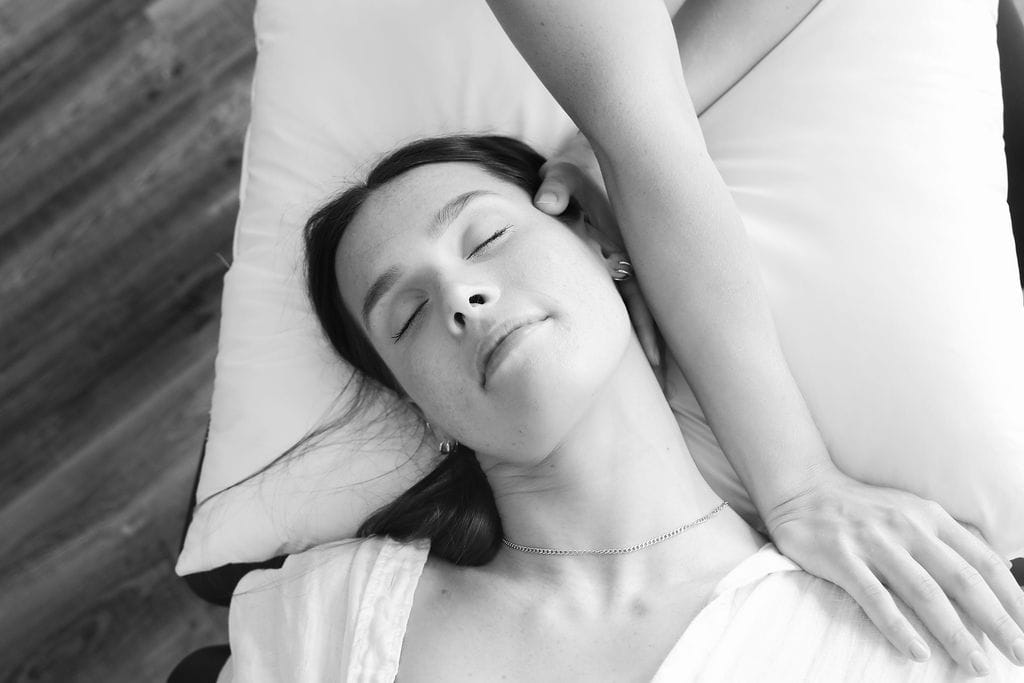
How often should I get a massage?
Regular massages can help you manage your stress and any other symptoms you may have. They can also help with pain relief, improve your flexibility and promote your overall well-being. Ideally, one session a week can help you maintain good health, but it is wise to ask your massage therapist for recommendations with regard to frequency.
What is the best duration for a massage?
Massage treatments range from 30-minute to 90-minute sessions. If you would like your entire body to be worked on, at least 60 minutes is recommended. A 30-minute session can suffice for a targeted area treatment.
Do you take off all your clothes for massage?
Most massage therapists prefer that you undress for your massage therapy session. You may request a gown if you wish but massage therapists are trained to drape their patients to maintain their privacy.
Is it rude to fall asleep during a massage?
Not at all, massage therapists are able to continue treating you even if you fall asleep. It is not rude, nor does it insult them in any way. Some might even take it as a compliment that they were able to relax you enough for you to fall asleep.
Should you talk during a massage?
As the client, you can choose to converse with your massage therapist, whenever you want. That being said, if you prefer peace and quiet and do not wish to talk during your session, feel free to let your therapist know.
A massage therapy clinic near me looks sketchy, how do I find out if it is a reputed clinic?
- Look up the clinic’s website and see if it looks respectable.
- Check for online reviews.
- Ask if the massage therapist is registered with the College of Massage Therapists of Ontario, ask for their name, and look them up on the College Register.
What is the most effective type of massage?
There are different types of massage techniques. A massage therapy treatment transmits dedication and care which can have profound effects on health and well-being by providing mental and physical relaxation.
- Relaxation Massage: A relaxation massage has a powerful effect on the nervous system that affects the whole body. It restores harmony to those who are stressed through careful manipulation of the muscles and joints.
- Deep Tissue Massage: A deep tissue massage aims to relieve chronic tension, through slow movements and deep pressure on contracted areas. A deep tissue massage provides profound relief with enduring effects in areas difficult to address with a more superficial muscle massage.
- Swedish Massage: This is the most common type of massage, characterized by long, gliding strokes, kneading, and circular movements. It aims to promote relaxation, improve circulation, and relieve muscle tension.
- Sports Massage: Primarily designed for athletes or individuals engaged in physical activities, sports massage helps prevent and treat sports-related injuries. It combines techniques from Swedish massage, deep tissue massage, and stretching to enhance performance, flexibility, and recovery.
- Hot Stone Massage: This type of massage involves placing smooth, heated stones on specific points of the body. The therapist may also use the stones to massage the body, providing a deep sense of relaxation and relieving muscle tension.
- Thai Massage: Also known as Thai yoga massage, it combines acupressure, stretching, and assisted yoga postures. The therapist uses their hands, knees, legs, and feet to apply rhythmic pressure and stretch the body, promoting flexibility and energy flow.
- Shiatsu Massage: Originating from Japan, Shiatsu massage applies finger pressure to specific points on the body to balance the body’s energy flow. It incorporates stretching and gentle joint manipulation techniques.
- Reflexology: This massage focuses on specific reflex points on the hands, feet, and ears that are believed to correspond to different organs and systems in the body. Pressure is applied to these points to promote relaxation and stimulate healing responses.
Is it rude not to tip a massage therapist?
A tip is never required at our clinics, however, it may be appreciated by your massage therapist. If you choose not to tip, by no means will it be considered rude.
However, in some settings like spas and hotel spas, it is considered a norm to tip your massage therapist.
Our More Locations
Physiotherapy Etobicoke | Physiotherapy Oakville | Physiotherapy North York | Physiotherapy Toronto | Physiotherapy Lawrence Park | Physiotherapy Mississauga | Physiotherapy Queens Quay | Physiotherapy Mississauga Erin Mills | Physiotherapy Liberty Village
How do I find a massage therapist near me?
We have 8 locations with registered massage therapists to help you. Book an Appointment today!
- RMT Etobicoke – Triangle Physiotherapy Etobicoke
- Registered Massage Therapy Oakville – Triangle Physiotherapy Oakville
- Massage Therapy North York – Triangle Physiotherapy North York
- Best RMT in Mississauga – Triangle Physiotherapy Mississauga
- RMT Downtown Toronto – Triangle Physiotherapy King West
- Uptown Toronto RMT – Triangle Physiotherapy Lawrence Park
- RMT near me in Downtown Toronto – Triangle Physiotherapy Queens Quay
- Mississauga RMT near me – Triangle Physiotherapy Erin Mills
Finding the best massage therapist involves considering factors like qualifications, experience, and the range of services offered. If you’re also looking for professional physiotherapy services to complement your massage therapy, there are excellent clinics in physiotherapy Etobicoke, Oakville, North York, Toronto, Lawrence Park, Queens Quay, Erin Mills, Mississauga, and Liberty Village. These locations provide expert care and personalized treatment plans to help you achieve overall wellness and recovery.
Winter is on its way out and spring is almost upon us. With the warmer change in weather, we shake off our desire to hibernate and become more active, doing activities we haven’t done in months! However, we sometimes rush into things too quickly and can put too much pressure on our feet, leading to the development of various foot problems. Orthotics might be the answer for you as they can help change the way your foot makes contact with the ground and can take pressure off high-pressure areas in the foot.
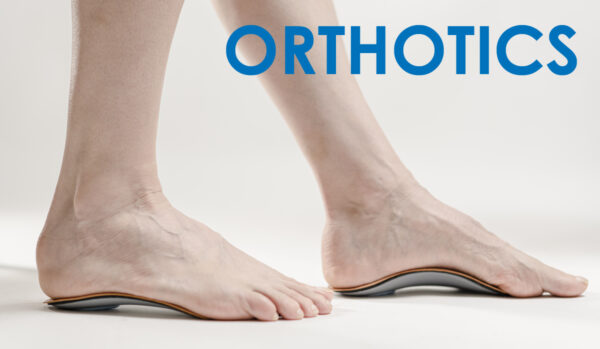
What are Orthotics?
Orthotics are insoles that you use inside your shoes that help rectify biomechanical problems of the foot. They are usually made of a combination of rubber, metal, plastic, leather, or any other synthetic material. Our feet have so many muscles, bones, and joints that abnormal biomechanics of how they’re moving can result in numerous foot problems along with pain in your knee, lower back, hip or leg.
Also read, Physiotherapy Clinics in Mississuaga
How can Orthotics correct foot conditions?
- Orthotics help balance pressure placed on the feet by redistributing the weight appropriately
- They help stabilize the heel
- Support the arch of the feet
- Provides cushioning to delicate and inflamed areas of the feet that arise from too much walking, jogging, running, etc.
There are generally two options when it comes to selecting orthotics: over-the-counter orthotics and custom-made orthotics. Over-the-counter orthotics are available at your local pharmacy and big box store and they can be used with your regular shoes to correct trivial problems. However, because they are prefab, generalized products, there is a possibility that they might make your foot pain worse due to it not being the right kind of support that you need. Custom made orthotics work best because they are tailor-made to correct the problems specific to your feet. Check out our earlier blog on the most popular kinds of Orthotics for further detail.
Also read, Physiotherapy Clinic in Oakville
Here’s a tip
Orthotics can still benefit you even if you don’t suffer from any foot issues but are an active participant in sports. If your foot is dealing with stress and impact, or if you have recently gained weight, orthotics will help you walk better!
Put your best foot forward and in the right direction!
We at Triangle Physiotherapy will quite literally help you get back on your feet! Our Chiropodist can advise you on how to look after your feet and what type of shoes or orthotics to opt for. Book an appointment with our Chiropodist today at any of our 6 clinics located across the GTA: Etobicoke, Oakville, Mississauga, North York, Toronto (King Street West) and Yonge Street. If you have any questions regarding any kind of foot conditions, please call or email us and we will be happy to help you!
Orthotics can be highly effective in managing various foot-related conditions, providing support and alignment to improve comfort and mobility. If you are looking for physiotherapy services to complement your orthotic treatment, there are clinics available in physiotherapy Etobicoke, Oakville, North York, Toronto, Lawrence Park, Queens Quay, Erin Mills, Mississauga, and Liberty Village. These locations offer specialized care and customized treatment plans to address your foot health needs.
While muscular pain is an inevitable part of life, some suffer from it for a long period of time and others proactively seek pain relief through massage therapy. Massage therapy is the scientific manipulation of the soft tissues of the body and it is used as a healing technique. Our skin is the largest organ of our body. While regular massage has tremendous health benefits, it is important to get it from a skilled therapist. Massage therapy has proven that it rids the body of physical discomfort and also improves a person’s mental & physical capacity without the use of prescription medication.
Some benefits of massage therapy are:
- Improved Joint mobility
- Reduced pain
- Enhanced blood circulation
- Reduced stress
- Reduced muscle tension
- Immediate health benefits
- Reduced intensity of headaches
- Relief from Insomnia
Also read, Best Physiotherapy Treatment in Oakville
Massage therapy is not just for the skin and muscles, it can also help to reduce high blood pressure, lower chances of depression and relieve headaches.
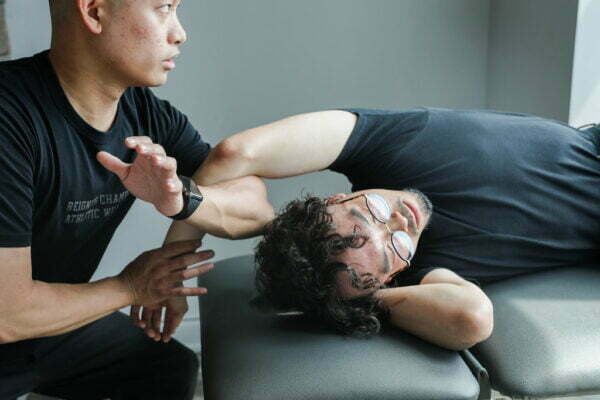
Various Types of Massage:
- Swedish massage (Relaxation, stress relief)
- Foot massage (Improves circulation, reduction of trigger points)
- Hand massage (Enhanced circulation, reduction of your trigger points)
- Deep tissue massage (repetitive strain, postural problems, recovery from injury)
- Sports massage (Preventing and treating injury and enhancing athletic performance)
Also read, Physiotherapists in Mississauga
Stress is one of the most significant factors that impact psychological and physical health. Massage therapy can be used to treat both acute and chronic conditions.
Causes: According to the American Massage Therapy Association (AMTA) Consumer survey, 72% of individuals surveyed claim their primary reason for receiving a massage in the previous 12 months was for medical reasons (43%) or stress-related (29%).
A growing body of research supports the health benefits of massage therapy for conditions such as stress, low-back pain, and more.
Effect: There are innumerable benefits to be achieved through regular massage therapy treatments from a Registered Massage Therapist. Whether your need is to have a moment of relaxation, reduce muscle tension or attain relief from chronic pain, a therapeutic massage can enhance your overall sense of emotional and physical well-being.
Also read, Physiotherapy Etobicoke
How is it Important in today’s life?
Well, our brain and muscles need time to rest once in a while if they are expected to move, think, and be productive forever. Seek help from a Massage Therapist to find relief from your symptoms. If you take care of your body today it will be there for you tomorrow! Adding massage therapy to your healthcare/recovery plan will provide natural relief without the aid of painkillers.
Don’t continue to suffer! Book an appointment with us to improve your health.
Massage Therapy Oakville | Massage Therapy Etobicoke | Massage Therapy Mississauga | Massage Therapy North York | Massage Therapy Toronto
Massage therapy is a beneficial treatment for reducing muscle tension, alleviating stress, and promoting overall relaxation and wellness. For those seeking professional physiotherapy services to complement massage therapy, there are clinics in physiotherapy Etobicoke, Oakville, North York, Toronto, Lawrence Park, Queens Quay, Erin Mills, Mississauga, and Liberty Village. These locations offer expert care and personalized treatment plans to enhance your recovery and well-being.

